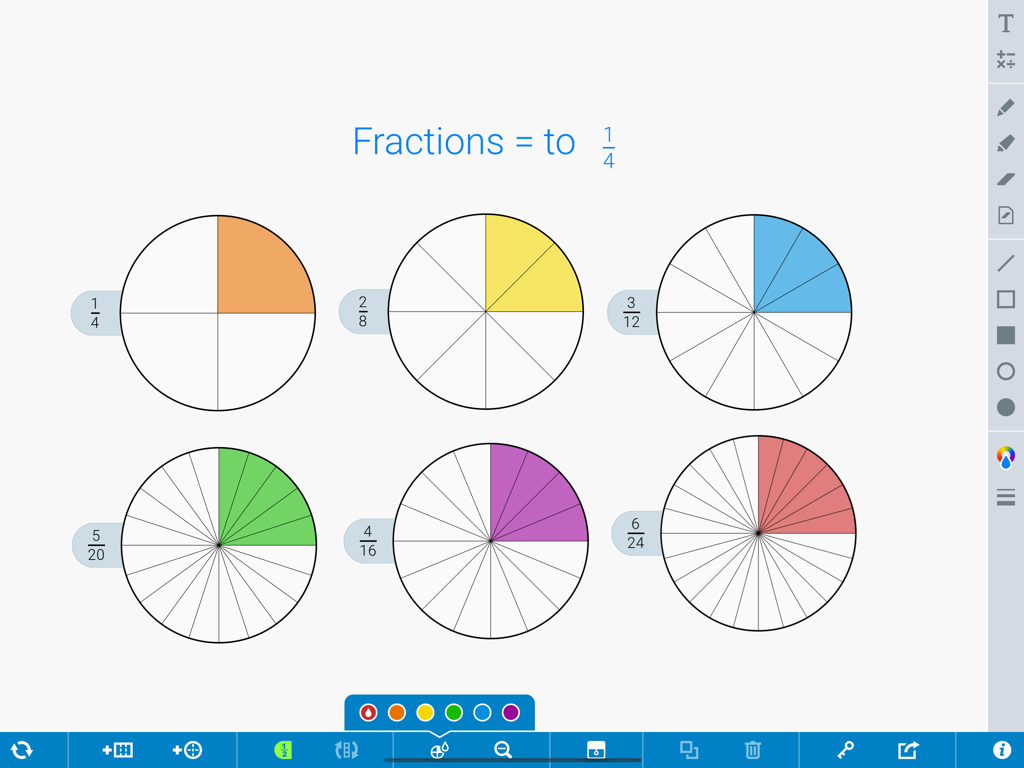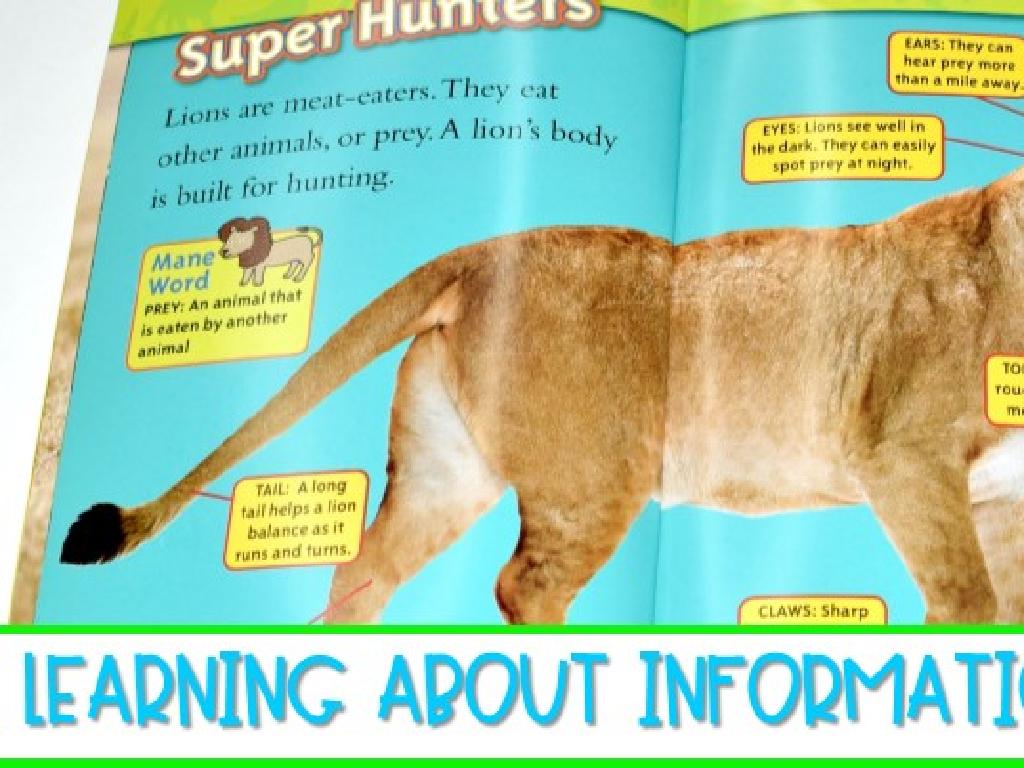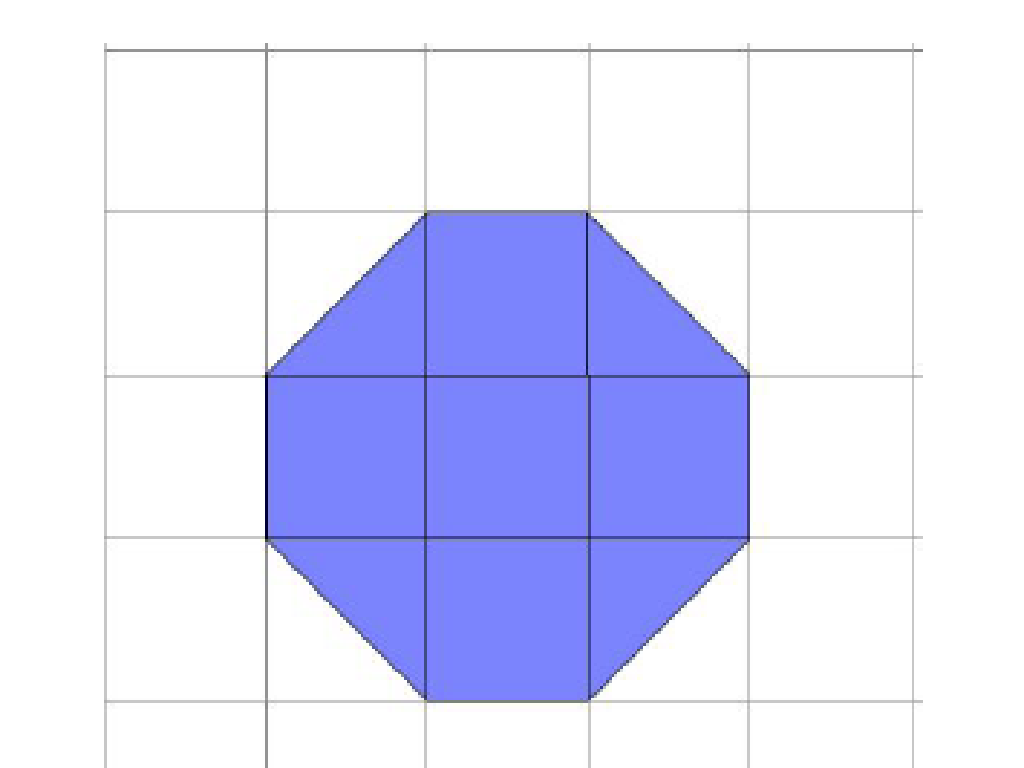Read Sight Words Set 2: And, Had, Is, Let, To
Subject: Language arts
Grade: Pre-k
Topic: Sight Words
Please LOG IN to download the presentation. Access is available to registered users only.
View More Content
Welcome to Sight Words!
– Sight words are special words
– They help us read smoothly
– Today’s words: and, had, is, let, to
– ‘and’ connects things, ‘had’ is past of have, ‘is’ means something exists, ‘let’ means allow, ‘to’ is used before a verb
– We’ll have fun learning these
– We’ll play games and sing songs with our new words
|
This slide introduces the concept of sight words to Pre-K students, emphasizing their importance in reading. Sight words are common words that appear frequently in text and may not follow standard phonetic rules, so recognizing them by sight can help young readers become more fluent. Focus on the words ‘and,’ ‘had,’ ‘is,’ ‘let,’ and ‘to,’ providing examples and contexts for each. For instance, use ‘and’ to connect two objects, ‘had’ to talk about possession in the past, ‘is’ to describe something that exists now, ‘let’ to give permission, and ‘to’ as a preposition before a verb. Incorporate interactive activities like matching games or songs to reinforce learning. The goal is to make the learning process enjoyable and memorable.
Learning the Sight Word: ‘and’
– ‘and’ joins things together
– Example: ‘apples AND oranges’
– Use ‘and’ to talk about more than one thing you like
– Practice saying ‘and’
– We can say ‘and’ when we read and speak
– Find ‘and’ in a sentence
– Look in your favorite book for ‘and’ and show us
|
This slide introduces the sight word ‘and’ to Pre-k students, emphasizing its role in joining words or phrases. Start by explaining that ‘and’ is like a bridge connecting things we talk about. Use tangible examples like combining fruits or toys they like. Have the class repeat ‘and’ after you to practice pronunciation. Then, ask students to find examples of ‘and’ in sentences, either from a book they are reading or examples you provide on the board. Encourage them to think of their own examples of things they can join with ‘and’. This interactive approach helps them recognize and use the word ‘and’ in different contexts.
Learning the Sight Word: ‘had’
– ‘had’ refers to the past
– It means something happened before now.
– Example: ‘She HAD a balloon.’
– ‘had’ shows ownership in the past.
– Think of ‘had’ from yesterday
Can you remember a toy or food you had?
– Share your ‘had’ sentence!
We’ll tell the class our sentences!
|
The word ‘had’ is a past tense verb, and it’s important for young learners to recognize and use it correctly. Start by explaining that ‘had’ is used to talk about things that have already happened. Use clear, simple examples like ‘She HAD a balloon’ to illustrate its use. Encourage the children to think of something they had yesterday to make the concept personal and easier to grasp. This could be a toy they played with or a meal they enjoyed. In the next class, ask the students to share their sentences using ‘had’, which will help reinforce their understanding and give them practice in using the word in context.
Learning the Sight Word: ‘is’
– ‘is’ shows present action
– It tells us what’s happening now.
– Example: ‘He IS running.’
– Use ‘is’ to talk about one person or thing.
– Create sentences using ‘is’
– Let’s think of what we do every day and use ‘is’!
|
The word ‘is’ is a present tense verb that is essential for early language development. It helps describe current actions or states of being. When teaching ‘is’, emphasize its use for singular subjects (he, she, it). Encourage students to relate the word to actions they perform daily, like ‘She is eating,’ or ‘The cat is sleeping.’ Have students come up with their own examples and possibly draw pictures to illustrate their sentences. This will help them understand the usage of ‘is’ in different contexts and make the learning process interactive and fun.
Learning the Sight Word: ‘let’
– ‘let’ means to allow
– To give permission or opportunity
– Example: ‘Let the cat in.’
– Demonstrates the use of ‘let’ in a sentence
– Discuss: What do you let friends do?
– Encourages sharing personal experiences
|
The sight word ‘let’ is commonly used to give permission or to allow someone to do something. It’s a simple yet powerful word that Pre-k students can understand through everyday examples. Use the sentence ‘Let the cat in.’ to illustrate its use in a familiar context. Ask students to think of times they have been allowed to do something or when they have let someone do something. This will help them relate the word to their own experiences and better grasp its meaning. Encourage them to use the word ‘let’ in sentences of their own.
Learning the Sight Word: ‘to’
– ‘to’ indicates direction or action
– Example: ‘Go TO the park.’
– Shows movement towards a place or thing
– Think of places you like to go
– Where do you like to go TO?
– Practice using ‘to’ in sentences
– Use ‘to’ when talking about activities
|
The sight word ‘to’ is commonly used to express direction or action towards a location or an object. It’s a fundamental word that helps in constructing sentences related to movement or intention. For example, ‘Go TO the park’ implies moving towards the park. Ask the students about their favorite places to go or things they like to do, and encourage them to use the word ‘to’ in their responses. This will help them understand the usage of the word in everyday conversation. Have them practice by forming simple sentences with ‘to’ to reinforce their learning.
Let’s Practice Sight Words!
– Match words to pictures
– Find ‘and’, ‘had’, ‘is’, ‘let’, ‘to’ and match with images
– Say words out loud together
– Practice pronunciation of each sight word
– Point to words in the room
– Locate sight words on posters or labels
– Recognize words in books
|
This slide is for a class activity focused on reinforcing the recognition of sight words set 2: ‘and’, ‘had’, ‘is’, ‘let’, ‘to’. Begin by having students match each sight word to the correct picture, which helps in visual association. Then, lead the class in saying the words aloud, ensuring correct pronunciation. Next, engage the students in a ‘word hunt’ around the room, pointing out the sight words on posters, labels, or other printed materials. Lastly, encourage students to recognize these words in the context of a book or story. For the teacher: Prepare images that represent each sight word, have clear labels around the classroom, and select a few short books or sentences where these words are used.
Sight Word Hunt Adventure
– We’re going on a word hunt
– Find objects matching sight words
– Look for things you can describe with our sight words
– Use ‘and’, ‘had’, ‘is’, ‘let’, ‘to’
– Example: ‘The cat IS on the mat’ or ‘I HAD a cookie’
– Ready, set, find!
|
This interactive activity is designed to help Pre-k students recognize and use sight words in a fun and engaging way. By searching for objects around the classroom, students will connect sight words with tangible items, reinforcing their understanding. Encourage them to use the words in sentences, like ‘The door IS blue’ or ‘I HAD a book.’ This will help them grasp the usage of these common words in everyday language. Prepare a list of objects beforehand that can be associated with the sight words to guide the students if they need help. After the hunt, gather the students and discuss what they found, ensuring each child has a chance to share and feel included.
Class Activity: Sight Word Bingo
– Play Bingo with sight words
– Listen for ‘and’, ‘had’, ‘is’, ‘let’, ‘to’
– Words like ‘and’, ‘had’, ‘is’, ‘let’, ‘to’ are our game pieces
– Cover the word you hear on your card
– Win a sticker for covering all words!
– A fun reward for learning your sight words!
|
This slide introduces a fun and interactive game of Bingo to help Pre-k students recognize and remember sight words. The teacher will call out sight words from the set: ‘and’, ‘had’, ‘is’, ‘let’, ‘to’, and students will cover the corresponding word on their Bingo cards. This activity not only engages students but also reinforces their ability to identify these common words by sight, which is crucial for early reading skills. The incentive of winning a sticker will motivate students to participate and pay attention. Prepare Bingo cards with the sight words and stickers for rewards in advance. During the game, ensure that each student is following along and provide help as needed. After the game, discuss with the students how recognizing these words quickly helps them read faster and understand sentences better.






